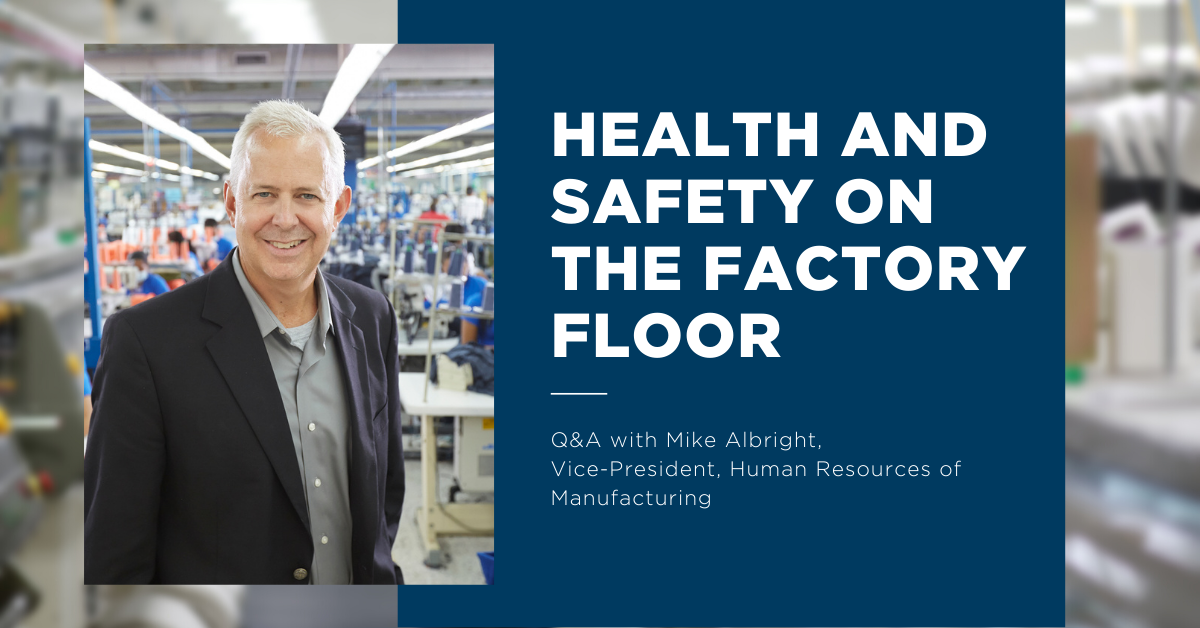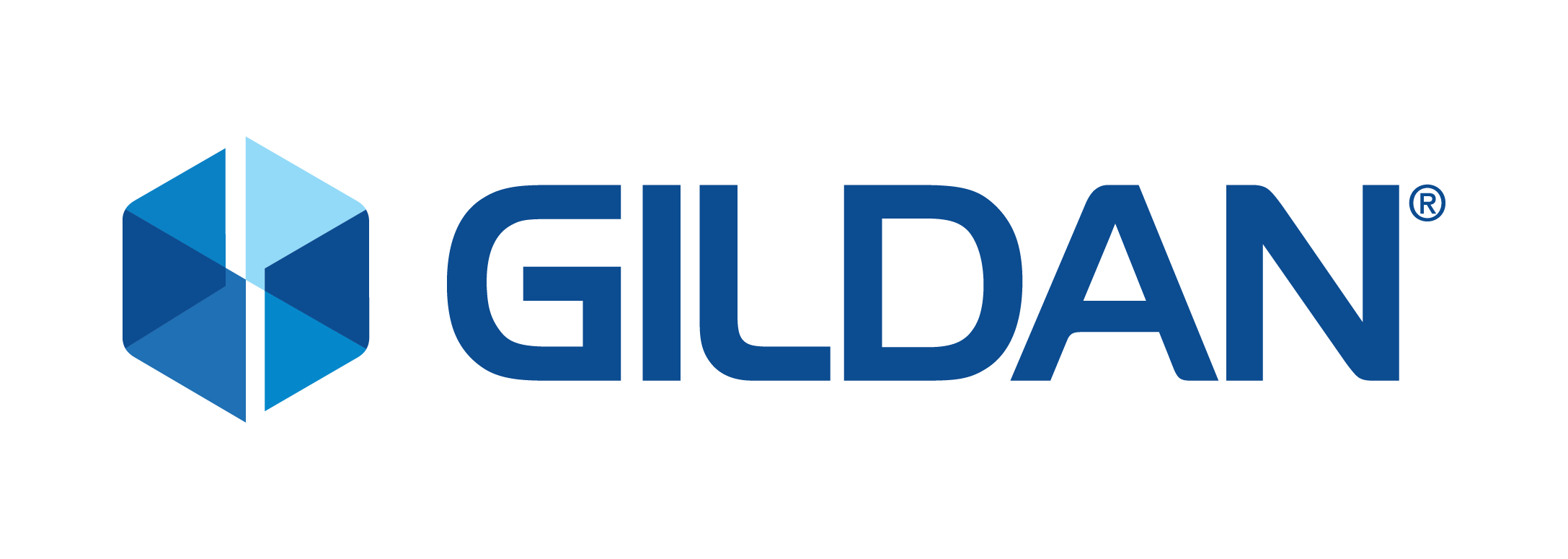Health and Safety on the Factory Floor: Q&A With Mike Albright, VP Human Resources of Manufacturing at Gildan

For companies working in the manufacturing space, taking a serious approach to improving employee safety, reducing workplace risks, and creating better, safer working conditions is a must. And with the right knowledge, commitment, and training, Health and Safety (H&S) can become a big part of a company culture. This is what we discussed with Mike Albright, Vice-President of Human Resources of Manufacturing at Gildan, to learn how the Company has prioritized, standardized, and accelerated H&S on the factory floor at its 30+ factories worldwide over the last three decades. Read as he talks about the journey:
Q: Can you give us an overview of your career at Gildan, when and how you started at the Company, and how you got to where you are today?
I joined Gildan in 2006 as part of an acquisition. I had already been working in the field, specifically in manufacturing and organizational change, for 15 years. As part of Gildan, I was asked to support the HR function in our US operations. In 2010, I took on a bigger role as I oversaw human resources for our Central American manufacturing hub. Today, I oversee and lead all human resources for our manufacturing sites worldwide with my various teams across the globe.
Q: Can you give us a sense of how H&S at Gildan has evolved?
Since the beginning, there has always been a significant focus at Gildan on our people and how we provide them with a workplace that is safe. In fact, this is something that is exemplified in one of our core values, “we operate responsibly,” a good testimony of how central it is to our culture!
H&S has significantly evolved since I first joined the organization. In the early years, the focus was to standardize how we managed H&S across our various hubs. As time went by and we had a robust foundation in place, it became more about enhancing what we already had and implementing even better industry best practices while learning and sharing from one factory to the next.
Q: What are some initiatives that Gildan does to reinforce the importance of H&S?
We have a plethora of initiatives and programs year-round when it comes to H&S because it is a top priority for us! It’s hard to highlight just a few, but if I had to choose, I’d highlight our Health and Safety Week. This initiative was launched in 2015 in Honduras and soon became a very successful and popular internal event that we rolled out to various hubs, most recently in the Dominican Republic. Health and Safety Week is all about dedicating the time to building awareness of good H&S practices for all workers and supervisors.
We also have the Seven Insights into Safety Leadership Training program that was launched two years ago. This is an extensive 2-day training course for all manufacturing managers designed to help them learn how to lead and create an injury-free workplace.
Last, I’d like to highlight that Gildan has recently begun the implementation of ISO 45001, the standard based on conventions and guidelines of the International Labor Organization, at all our manufacturing facilities. The goal of ISO 45001 is to have one global H&S system that focuses on systematic processes, promoting proactive H&S performance led by senior management with a high degree of employee involvement.
Q: What are some H&S milestones that Gildan reached that you are incredibly proud of?
Globally, we have reduced our work-related accidents consistently in all our manufacturing facilities over the last three years, and I am incredibly proud of our teams for this accomplishment. Even more so because this was accomplished during a very challenging period for Gildan. In 2020, the Company faced unprecedented challenges in manufacturing due to the impacts of COVID-19 and two back-to-back hurricanes that impacted our manufacturing complex in Honduras. Still, despite these difficult events, we were able to lower our work-related accidents, and this is very much so the testimony of Gildan’s commitment to strong H&S standards at every single level of the organization in good times and in hard times.
Q: What are some of the challenges that come with H&S on such a global scale?
One of the great things about Gildan is how big we are and how much experience we have in the manufacturing space – 37 years, to be exact! But operating at this scale also presents some difficulties. When it comes to H&S, one of our challenges has been to make sure our approach is truly standardized and consistent regardless of the region of the world we operate in. This can be difficult when working in different jurisdictions with varying laws and policies and different cultures that sometimes put a larger or lesser focus on H&S. Another challenge is making sure that new knowledge gets communicated in real-time to all our factories. Sometimes an accident investigation or an audit report will unveil a new discovery that can benefit everyone. Still, it can take some time to formalize that and communicate it to our teams globally to ensure this new practice gets put in place.
Q: COVID-19 brought in new challenges regarding H&S on the factory floor; how were your teams able to implement such a strict biosecurity protocol so quickly?
One of the many advantages of owning and operating our own facilities is that we always have personnel on the ground. When the pandemic hit, our Global Health & Safety team, which is also composed of in-house doctors and nurses, started brainstorming ideas immediately. They quickly developed a new stringent protocol to protect our employees based on global standards from the CDC, The World Health Organization, and the Apparel Association in Honduras. Our teams then created a new global H&S standard for Gildan, and quickly rolled it out to our facilities by working with their colleagues on the ground.
It was undoubtedly a very uncertain and difficult time, and I am very proud that the teams quickly rose to the challenge and tackled such a complex issue in a proactive and structured manner to keep our people safe and get operations back up and running.
Q. What is Gildan’s key to success when it comes to H&S on the factory floor?
I believe the key to our success is excellent leadership and communication. Here at Gildan, we have a management team that knows that H&S is the priority and works very hard to set that culture in place across our supply chain. This has cascaded across the organization and has helped generate a culture that sustains two-way communication and an open-door policy. Having a safe workplace requires an environment in which employees can make suggestions and improvements about performing their duties safely. Thanks to our great leadership and strong communication that is just the culture that we have created at Gildan.

